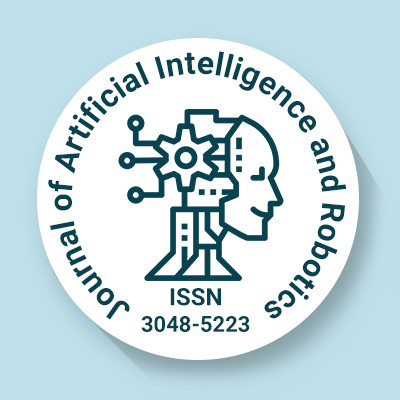
Journal of Artificial Intelligence and Robotics
OPEN ACCESS
ISSN: 3048-5223

OPEN ACCESS
ISSN: 3048-5223
Nanorobotics is a cutting-edge area of nanotechnology that zeroes in on the design, development, and control of tiny robots, known as nanobots, which function at the molecular or atomic level. These minuscule machines, usually measuring between 1 and 100 nanometers, are crafted to carry out specific tasks with remarkable precision, making them incredibly useful in sectors like medicine, environmental science, and engineering. The evolution of nanorobotics brings together concepts from physics, chemistry, biology, and artificial intelligence, allowing for autonomous or semi-autonomous operations at the nanoscale.
One of the most exciting uses of nanorobotics is in the medical field, especially for targeted drug delivery and minimally invasive surgeries. Conventional drug delivery methods often result in unwanted side effects because they lack the ability to specifically target diseased cells. However, nanobots can be designed to travel through the bloodstream, locate diseased cells, and deliver therapeutic agents right where they’re needed, enhancing treatment effectiveness while minimizing side effects. For example, researchers have looked into DNA-based nanorobots that can identify cancerous cells and release chemotherapy drugs only when they encounter certain biomarkers. Moreover, nanorobots have shown promise in clearing arterial plaques, repairing damaged tissues, and even aiding in neural regeneration.
Beyond just the medical field, nanorobotics is bursting with potential in both environmental and industrial areas. In environmental science, these tiny robots can tackle pollution, purify water, and remove toxins by identifying and neutralizing harmful substances right at the molecular level. They can also play a crucial role in waste management by breaking down hazardous materials into safe, non-toxic components. When it comes to manufacturing and electronics, researchers are looking into how nanorobots can manipulate atoms and molecules with incredible precision, which could lead to the creation of more efficient semiconductors, nanoelectronic devices, and advanced materials that boast unique properties.
Building functional nanorobots involves some pretty sophisticated techniques, like self-assembly, DNA origami, and molecular machinery. These methods help organize nanoscale components precisely, allowing nanobots to perform programmed tasks. However, powering these tiny robots presents its own set of challenges. Researchers are investigating various solutions, including chemical energy, biological motors, and external stimuli like magnetic fields or ultrasound waves to guide their movement and actions. Plus, advancements in artificial intelligence and machine learning are taking nanorobotics to the next level by enabling these tiny machines to make adaptive and intelligent decisions on a nanoscale.
As we continue to push the boundaries of research and technology, nanorobotics is poised to shake up a bunch of industries, especially healthcare. It has the potential to change the game in how we diagnose, treat, and prevent diseases. With ongoing breakthroughs in materials science, synthetic biology, and computational modeling, we are getting closer to creating more advanced and functional nanorobots, which could unlock their full potential in both scientific and commercial realms.